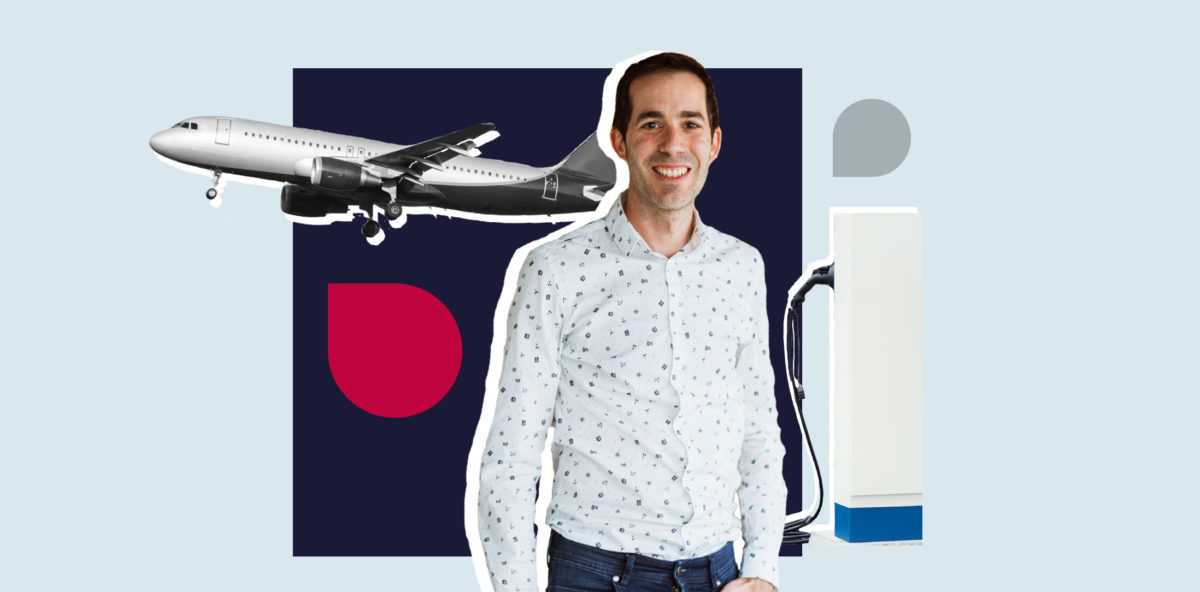This website uses cookies so that we can provide you with the best user experience possible. Cookie information is stored in your browser and performs functions such as recognising you when you return to our website and helping our team to understand which sections of the website you find most interesting and useful.
INTERVIEW
“Our customers are diversifying their transport strategy”
We interviewed Sergio Úbeda, leader of Zabala Innovation's Transport Area

The transport sector is undergoing rapid change, especially in the interests of a transition that benefits sustainability and digitalisation. In this interview, the leader of Zabala Innovation’s Transport Area, Sergio Úbeda, reviews some of the milestones facing this sector.
Road transport is undergoing a revolution: was the electric vehicle a utopia fifteen years ago?
The first electric car dates to 1834, although it did not use rechargeable batteries. The concept of the electric vehicle as we think of it today began to develop in the 1990s. However, the biggest push came in the early 20th century, and today almost every manufacturer has an electric model.
What was a utopia 15 years ago was to have an extensive network of public charging points, which would make the mass introduction of this type of vehicle viable? This is still one of the main challenges today.
Are we ready for the autonomous vehicle or will it take decades before it is regulated and socially accepted?
Today, certain ‘autonomous’ functions are already integrated into conventional vehicles, such as parking assistants, lane assistants, safety distance assistants, etc. However, although there are also some models with a very high level of autonomy, there is still a long way to go before it is introduced on a massive scale, both because of the need to continue developing technology, not only in the vehicle but also in the infrastructures to be able to safely interconnect the entire ecosystem. There are still relevant aspects to be resolved, such as cybersecurity, social acceptance, and, above all, regulation. On this last point, it is critical to resolving the challenge facing the insurance sector.
What about other modes of transport that are also transforming by leaps and bounds?
Indeed, it is. Let us not think that the only revolution is taking place in road transport. Other modes of transport are also being transformed in these two areas: sustainability and digitalisation. Examples of this are autonomous trains, hydrogen-powered aircraft, and ships incorporating technologies to reduce their fuel consumption.
The Covid-19 pandemic hit the aviation sector hard. What challenges lie ahead in the post-coronavirus scenario?
As far as the virus itself is concerned, there are still steps to be taken in the management of infection control and its spread. However, with this resolved, aviation faces the challenge of reducing the environmental impact of its operations, as it is currently the most polluting mode of transport. To this end, the main strategies are aimed at making aircraft lighter and using new fuels such as hydrogen.
What is the EU’s attitude towards decarbonisation in the transport sector?
It is the Green Deal the one that is setting the European Union’s roadmap in this area, and where transport plays a fundamental role in achieving the major objectives set out in it.
What are your flagship programmes to develop more sustainable transport?
There are currently two types of stimulus. One is support for innovation through the Horizon Europe programme and the partnerships associated with transport: 2ZERO (electric vehicles), Europe’s Rail (rail transport), Clean Aviation, and ZEWT (maritime transport). And secondly, incentives for investment in infrastructure, the most relevant being the CEF Transport programme, and its AFIF theme for the deployment of alternative fuel recharging points.
Green hydrogen is the great trump card in this green transition, or are there no foolproof solutions?
There is no single solution that will solve all the problems; this transition must be marked by a combination of all available alternatives. For example, hydrogen can be an excellent solution for large volume vehicles and long distances (trucks, buses, aeroplanes…), while electric vehicles a priori seem to be a better solution for smaller vehicles and shorter range of use (although with a good infrastructure this problem would be solved). Moreover, we must not forget that the concept of sustainable mobility includes not only alternative vehicles and fuels, but also the social component. A very clear example is urban mobility, where the main trump card will be played by models that promote the use of collective transport and shared vehicles, the deployment of bicycle lanes and low-emission zones and, above all, the involvement of citizens in this paradigm shift.
So, does transport design cities?
Which came first, the chicken or the egg? The same is true for this question. On the one hand, cities are continuously expanding and therefore mobility needs are changing, both personal and last mile logistics. On the other hand, the emergence of technological innovations and the introduction of new regulations also changes the way we move. Therefore, I would not say that it is not transport that designs cities, but that they must grow hand in hand.
Are we citizens shaped to some extent by transport?
Both concepts are dependent. Demand-driven transport management models must be designed, but also try to model or incentivise certain behaviours in the use of transport. This approach is based on a strategy of co-creation, which is a form of collaborative development that allows all actors (urban planners, transport operators, users, citizens, traders…) to develop an urban mobility model by the needs of all of them.
And can such major changes be applied in the rural environment?
This is a very relevant point. We are currently facing the demographic challenge, where cities are becoming overcrowded and rural areas are becoming depopulated, with the lack of services and technological endowments that this represents. For example, the lack of electric charging infrastructure, which currently revolves around the major arteries that connect cities, or the absence of 5G networks in rural areas, make the use of electric and autonomous vehicles less viable.
On this point, I believe it is important to structure strategic plans aimed at defining new mobility models in rural areas, perhaps driven by the development of the sustainable tourism model as a driving force in these areas. Nor should we forget the basic needs of the population, such as the mobility of schoolchildren and, above all, the elderly, who are severely lacking in terms of connectivity with hospital systems and last-mile logistics.
How is transport mainstreaming reflected in your area?
It is reflected internally in our team because we must deal with different modes of transport and cross-cutting areas such as logistics, urban mobility, and security. And also, in the necessary cooperation with other areas of knowledge such as energy, digitalisation, security, environment, or social innovation.
Which sectors do you work most closely with?
Undoubtedly the largest volume of work is related to the development of technologies and infrastructures linked to alternative fuels, mainly in cities and roads, but also in the maritime and port sectors. There are also other niches in which we are well established, such as advanced manufacturing applied to vehicle lighting, mainly in road vehicles and aircraft, and digital issues, both at the vehicle and infrastructure level.
On the subject of transport, what changes have you noticed in your customers?
We have observed that some clients who until a few years ago had a strong focus on a single sector or modality are diversifying their strategy. Transport is a subject matter that cuts across many disciplines, so experts in one application can find synergies in another with relative ease.
What challenges does the Transport Area face in 2022?
In 2021, the main challenge for the area was to undertake the transition from the Horizon 2020 programme to the Horizon Europe programme. Therefore, the challenge for 2022 is to strengthen those areas where we are a real benchmark, such as the CEF Transport programme, and to try to penetrate those areas where we have not been so visible in the previous period.



